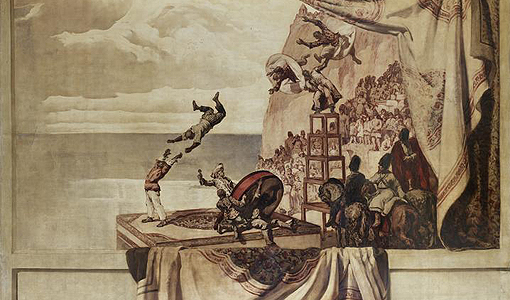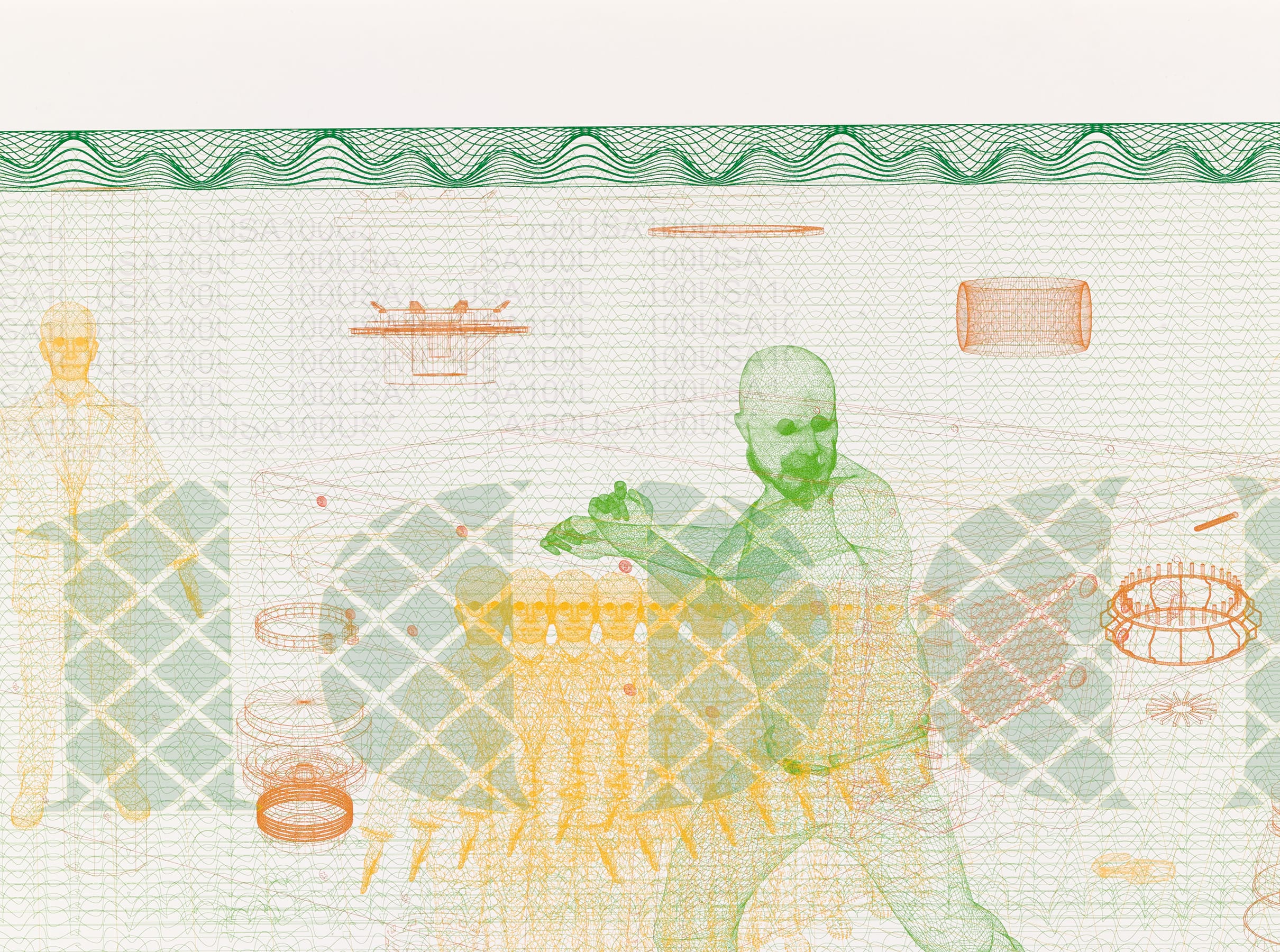
The paintings by José María Sert for the Mdivani palazzo: a gem of the Banco de España collection
Josep María Serti Badia (1874 - 1945) was one of the most widely renowned Catalan artists of his time. He was a grand master of decorative art at a time when it was falling into decline. Sert was described by José María Viñuela as Spain's most brilliant painter-decorator of the first half of the 20th century. Over the course of his career, he was commissioned to decorate a wide range of buildings, from palazzos in France, Italy and Spain to English mansions, New York skyscrapers and churches such as Vic Cathedral![]() , one of his most iconic projects.
, one of his most iconic projects.
In 1934 Prince Alexis Mdivani, a Georgian aristocrat whose family had fled Russia after the 1917 Revolution, hired him to decorate the walls of the ballroom of the palazzo that he had purchased in Venice. Sert came up with a consistent, unified, iconographic design which Pilar Sáez Lacave describes as extending Sert’s quest to link the Baroque with the Mediterranean. The Mediterranean themes were overlaid with a touch of the Orient, perhaps in allusion to the city where the work was to be hung and the eastern roots of his client.
 Two photos of the ballroom at Prince Mdivani's palazzo
Two photos of the ballroom at Prince Mdivani's palazzo
Alexis Mdivani was killed in a car accident in 1935. Twenty-five years later, Sert's paintings for the palazzo in Venice were acquired by the Banco de España on the advice of Juan de Zavala, the architect who was building the Bank's new regional headquarters on the Plaza de Cataluña in Barcelona at that time. The canvases were adapted, rearranged and split up to decorate various rooms at the regional headquarters building, including the trading floor, the grand staircase to the first floor and the meeting room. Painter Félix Alonso and restorer Ángel Macarrón, who supplied additional fabric, helped adapt the works to their new setting.
In the 1980s the two largest pictures were cleaned, restored and relocated to an area open to the public on the trading floor. In an effort to return them to their original use as decorative murals, strips of paint were added around the edges of the canvases, leaving a small gap around the original works, so that they look as if they are framed. This was done masterfully and with great sensitivity by Madrid-born artist María Isabel Quintanilla.
